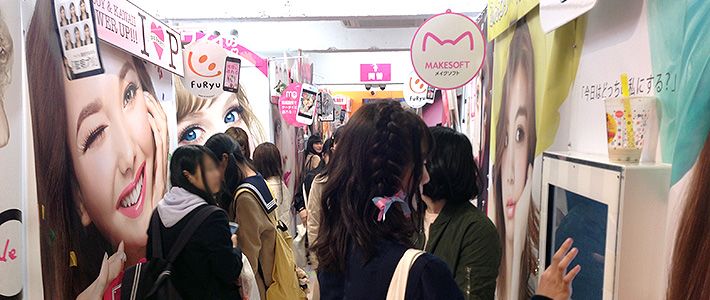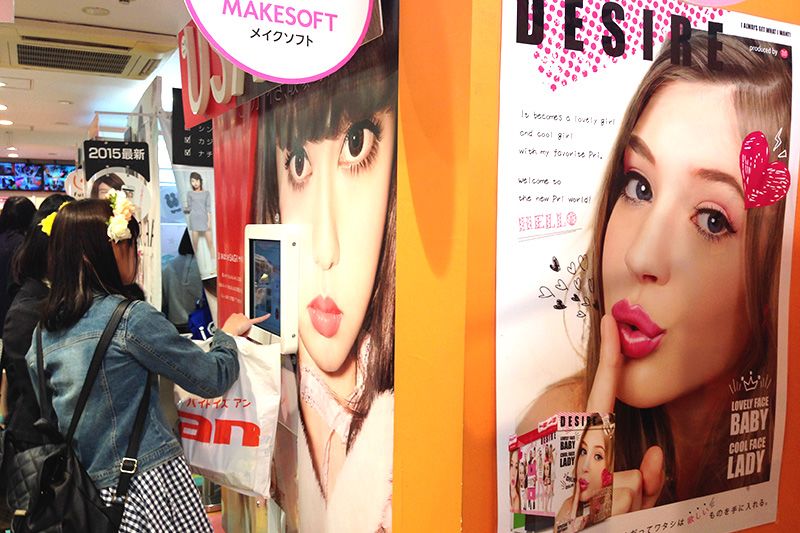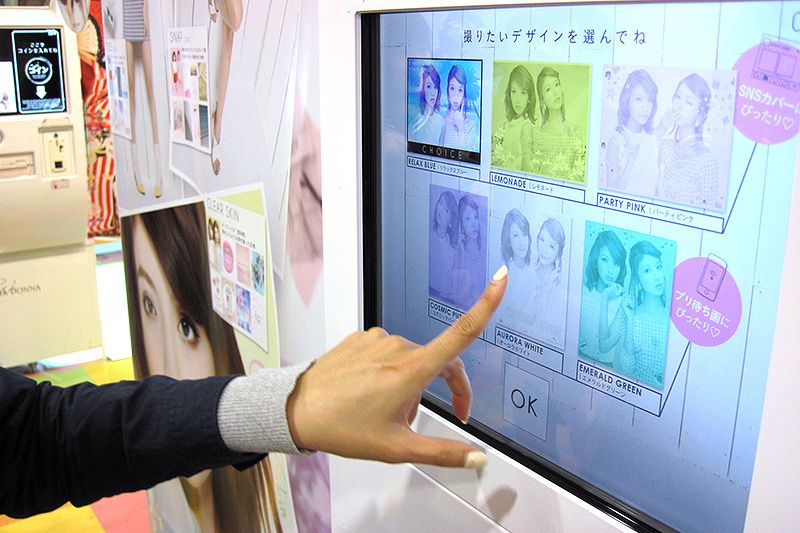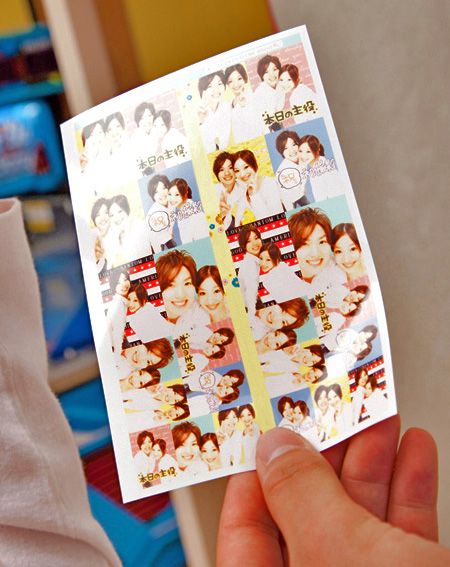
“Purikura”: Photos with Friends
Society Culture- English
- 日本語
- 简体字
- 繁體字
- Français
- Español
- العربية
- Русский
The Original “Print Club”
Japan’s first purikura booth was introduced in 1995 as a new way to enjoy self-portrait photography. It was a place where two or three friends or family members could get together and pose for pictures to print out on sheets of small stickers. The original brand name, Purinto Kurabu, was a Japanese rendering of the English words “print club.” This was shortened to give the now generic name purikura.
The pastime caught on quickly, particularly among schoolgirls and young women who affirmed friendships by exchanging photo stickers. Another popular trend was filling notebooks with many kinds of stickers that the collectors had taken themselves or received from friends.
The first-generation machines simply took photographs, but today’s purikura booths are much more advanced. It is possible to alter backgrounds or apply a huge number of effects to enhance the experience. Imagination is an essential part of enjoying purikura.
Basic Instructions
- Insert money. Approximately ¥400 for a session of several photos.
- Select the background and other options, using the touch panel.
- Enter the names of people taking part.
- Take pictures. Voice instructions are given in Japanese. Pose while looking at the camera above the touch panel.
- Go to the decoration area outside the booth.
- Using the stylus, apply filters and add signatures, messages, drawings, makeup, and so on.
- Select the sticker layout.
- Send data to mobile phones.
- Print stickers and cut out.
You can adjust the size of the stickers and the number printed on a sheet. At some cheaper purikura booths, users only receive the photographs as data and do not print them out. There may also be the option to turn photos into social network avatars or create and add effects to short videos.
Culture Show: Harajuku and Photobooths (Purikura explanation in English)
Cosplay Meets Purikura
Purikura booths were first commonly found in amusement arcades, but can now be seen at theme parks, shopping malls, and train stations across the country. On the famous shopping street Takeshita-dōri in youth-centered Harajuku, specialist store Purikura Land Noa has 25 of the latest machines. It also has makeup and fitting rooms, attracting long lines of female students and young couples on weekends and holidays.
There is also the inevitable crossover between “cosplay” and purikura, known as kosupuri. At some stores, users can borrow uniforms and other costumes to dress up before taking pictures.
Improving on Reality
 The Makesoft company produces a popular booth, the Usagi.
The Makesoft company produces a popular booth, the Usagi.
With the latest image-processing technologies, purikura promises to create pictures that improve on reality. It takes only seconds for users to make their eyes larger, refine their chins, adjust skin tone, and even add centimeters to the length of their legs. A recent function subtly alters features to bring them more in line with a standard take on beauty based on scientific analysis of over 100 popular models and celebrities.
Purikura has developed from offering simple photo stickers to become a fun way of exploring alternate appearances together with friends.
Please note that at some purikura booths, male customers may not be allowed or need to be accompanied by female customers, due to safety concerns.
Photo credit: Choosing photo sizes: Laurent Neyssensas

